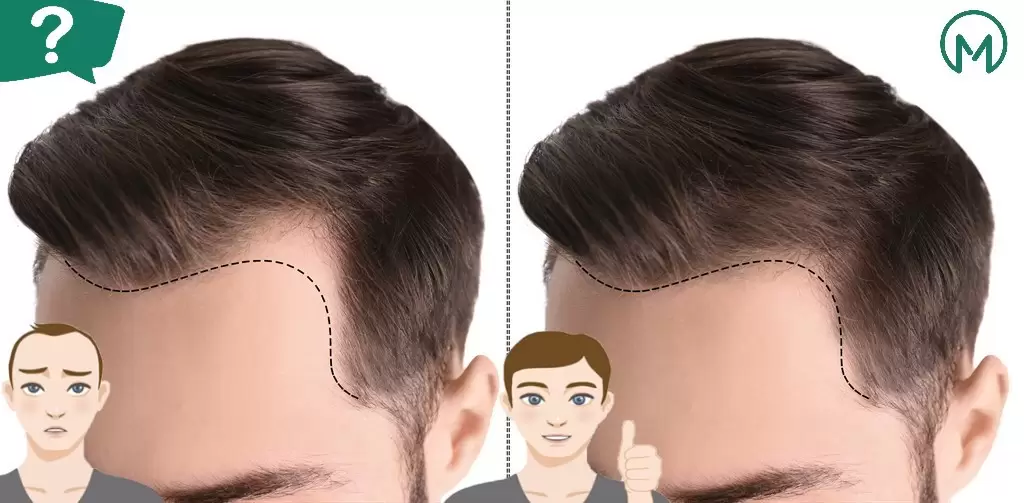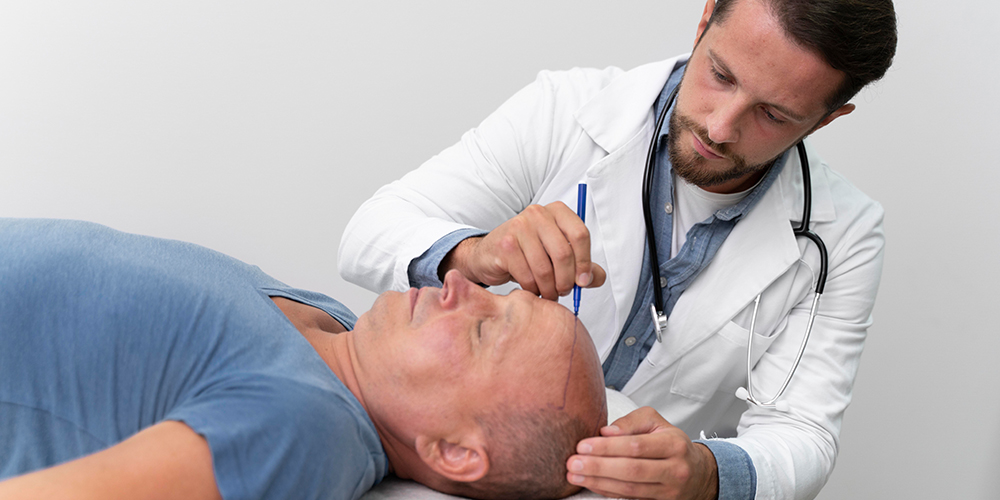Hair Transplantation Operation Details Istanbul Turkey |
||
|---|---|---|
 Accommodation 3 Days |
 Hospital Stay 0 Day |
 Operation Duration 3-5 Hours |
 Anaesthesia Local anesthesia |
 Recovery Duration 15-20 Months |
 Follow Up Visit 2nd Day |
Click Here For More Information |
||
WARNING The duration of treatment and trecovery time after the treatment may vary from patients to patients. The above information includes estimated values prepared for patients from abroad.
What is Hair Transplantation?
Hair transplantation is a process of restoring hair in the areas where there is hair loss resulting from several causative conditions such as genetic, hormonal, drugs and accident. There should be enough hair in the donor area in order to be successful in hair transplantation. For hair transplantation, hair follicles in the nape of the neck are the best harvesting units which are resistant to hair shedding.
Hair transplantation is suitable for both men and women, although there are some differences. In men, under no circumstances, the hair on the nape of the head will not shed as it is completely insensitive to DHT (dihydrotestosterone) hormones. Therefore, as a more accurate application, hair follicles on the back of the head, which is the most preferred area, should be transplanted in the bald area. Therefore, hair transplantation in men is more successful than women.
Nowadays, there is a booming demand for hair transplantation procedures. This demand may mislead the patients by inexperienced teams. Therefore, the patients should be properly informed and the procedure should be applied by experts who have experience in this area to avoid unwanted situations. Hair transplantation is a risk-free and least painful aesthetic treatment. Under local anaesthetic, multi-follicle grafts (two or more follicles) are safely taken from the harvesting area without harming them via micro punches.
Numbers of grafts vary depending on the donor areas. It is estimated between 2500-4000, which correspond to 7500-12000 hair follicles. No thinning will be observed on the donor areas. Hair transplantation may be performed any time of the year and there is no specifically suggested season. Treatment in summertime is not an obstacle for enjoying the sea. Moreover, in summer, the transplanted hair follicles grow faster and skin regeneration is more rapid.
After the operation, the transplanted hair will not fall out for a lifetime; however, it should be kept in mind that there may be hair shedding after a hair transplant sometimes due to hereditary reasons. 8-10 days following the hair transplantation procedure, there will be a thin layer of scabs in the donor area. The crusting on the donor area will fall off like dandruff but completely disappear by washing within 10 days. The patients may continue their daily life, but they must wear a hat.
A variety of techniques for hair transplantation is usually performed using two techniques: FUT (Follicular Unit Transfer) and FUE (Follicular Unit Extraction). FUT is the first developed technique. Nowadays, FUE is more preferred than FUT technique due to many advantages, such as shorter processing time, faster recovery and no left marks or scars on both the donor and the harvested areas after transplantation. Recently, in addition to these two techniques, robotic hair transplant technology based on computerised programs is being developed as a new technique in this area, diminishing the number of technical staff participating in hair transplant procedures.
How to do hair transplantation?
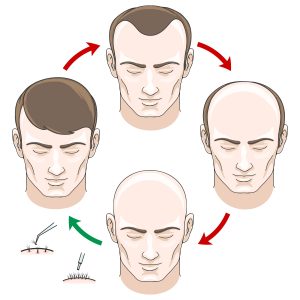
Hair transplantation requires certain stages to be followed in order and meticulously. According to the technique used, the preparation stages of the hair transplant procedure (evaluation of the donor and recipient area and the anaesthesia stages) are the same, but the subsequent stages differ. Due to the disadvantages of the FUT technique, it is no longer a method preferred today. The method that is frequently used today is the FUE method, and we will talk about the stages of this method here:
- Evaluation of the donor and recipient area
The donor area to be used for hair transplantation is evaluated. You will be told approximately how many grafts can be obtained. It is decided with you where the hairline will be in the area to be transplanted, and after the necessary drawings are made, they are shown to you for your approval.
- The trimming of the donor area
Before the transplantation process is started, the hair in the donor area is trimmed.
- The preparing of the donor area for harvesting
After the hair is cut, you will be given local anaesthesia so that your hair can be harvested without pain and the team can work more comfortably. Local anaesthesia can be repeated several times, depending on the pain threshold of the person and the duration of the procedure. Before proceeding with this procedure, it will be questioned whether you have any allergies to local anaesthetics and painkillers. If you are allergic to local anaesthetics and painkillers, the hair is harvested as much as you can withstand the pain without local anaesthesia. But in this case, the process of harvesting and transplanting the hair may take up to 2-3 times.
- Harvesting of the hair grafts from the donor area
Hair follicles are harvested one by one from the donor area by means of hand operated micromotors or very small (0,5-0,9 mm) extraction needles. To preserve the viability of the harvested hair grafts, they are placed on a gauze container-soaked saline (25-30 hair grafts per container) in a petri dish, until implantation to the recipient bald area.
- Opening of channels in the bald recipient area
Normally, a metal blade is used to open the channels where the hair grafts will be placed. However, much better results can be obtained with sapphire blades that cause less tissue damage and provide a natural-looking growth direction. Sapphire blades cause less skin redness. Metal blades create U-shaped slits in the bald area, while sapphire blades create V shaped slits. Thus, sapphire blades ensure better adhesion of the transplanted hair grafts to the surrounding connective tissue and reduce the formation of crusts by allowing less fluid leakage.
- Transplanting harvested hair grafts
The collected hair grafts are placed in the channels opened one by one, parallel to the hairline, at an appropriate angle in accordance with the direction of the original hair. After the implantation of hair grafts is completed, rinsing is done with saline and the dressing of the donor area is completed by covering with gauze.
- The aftercare
After the hair transplantation and donor areas are cleaned and the donor area is dressed, you will be given all the medicines (antibiotics, pain killer etc) you need for your recovery right after the procedure, including 1 softening lotion, 1 shampoo and a travel pillow (starter kit). You will be given a 5-day antibiotic treatment and some medications (optional) to prevent swelling that may occur after the transplant procedure. In addition, you apply a cold to your forehead at regular intervals to prevent swelling on your face. Especially if you are not going to take anti-oedema medication, make sure to apply cold.
In FUE hair transplantation, there is almost no pain or discomfort after the procedure. Some people may have pain, if it bothers you too much, you can take painkillers. Normally, the average recovery time is less than 7 days.
For the first 3 days, you should protect the transplanted area very carefully against any contact or impact. In order to achieve successful results in hair transplantation, you must comply with the following points after hair transplantation:
- You should avoid activities such as swimming, sauna and Turkish bath for 3 weeks
- You should not go to the solarium
- You should avoid sexual intercourse for 1 week-10 days after the operation
- You should avoid heavy work and sports activities
For more detailed information, you can review the instruction cards below:
MEDICAL DRUG USE INSTRUCTION CARD AFTER HAIR TRANSPLANT
|
Antibiotic Use:Antibiotic treatment is required to prevent the risk of infection due to small holes in the skin in the hair transplant area and in the areas where the hair is taken. Although the number of daily use of antibiotics given to you varies, you will need to use antibiotics for 5 days. After 5 days, you will not need to use what is in the box. The contents of the boxes of the drugs may differ as they are planned according to different treatments. |
Use of pain relievers:Pain can differ from person to person. If you have pain, it will usually be sufficient to take one at night before going to bed. If it is too severe, you can go up to 3-4 times a day depending on the recommended dosage of the pain reliever you use. |
Cortisone use:Prednol 16 mg is a cortisone derivative drug that is often used to prevent facial swelling (oedema). However, it is not a necessary medicine. Generally, you will not need to use this medicine if you rest well, follow the rules of hospitalisation, and apply your ice packs properly. If you need to use it, you can start and end the treatment as follows after the day of the operation (It is not recommended to change the doses in this treatment, you should follow it step by step):
The use of cortisone is a drug that should be controlled, and it is not recommended to exceed the specified doses or to cut them suddenly. If you have stomach complaints or stomach pain, we recommend that you take H2 receptor antagonist stomach drugs (such as Omeprazole, esomeprazole, famotidine derivatives). |
WASHING INSTRUCTION CARD AFTER HAIR TRANSPLANT |
Softening lotions:Panthenol derivative softening lotions should be used for the area where the hair is transplanted for 15 days. These lotions allow the dried blood clots in the planting area to be easily removed. A small amount of this lotion is taken and spread on the area where the hair transplant is done, by gently applying it. After applying the lotion, it is waited for 10 minutes for the first wash and 30-45 minutes for the next day and then rinsed with warm water. Medical shampoo will not be used on the first day. After the second day after that, you will use the medical shampoo after this softening lotion. After 15 days, you can continue using the recommended medical shampoo directly. |
Medical shampoos:Paraben, soap and alkali-free shampoos should be used. You will use the shampoo for 1 year. You will use this shampoo after the softening lotion for the first 15 days. After 15 days you will be able to use the shampoo directly. You will not use the lotion after 15 days. It is not recommended to change your shampoo. |
Medical drugs to be used for the donor area:You can use Rifocin ampoule or betadine. Just break the bulb on the area where the hair is taken, pour it into a gauze pad and apply. Apply it only to the donor area in the 1st, 2nd, 3rd and 4th washes, wipe and clean. |
RECOMMENDED APPLICATIONS FOR PATIENT’S COMFORT AFTER HAIR TRANSPLANT |
Cushion usage:You can reduce the pressure of the donor area with the pillow by placing the inflatable pillows, also known as travel pillows, under your neck. This will reduce pain and help speed up the healing of that area. You can also roll a towel and use it for the same purpose. |
Ice pack/gel usage:The use of an ice pack or gel after the operation is an extremely important application. This reduces the formation of swelling. Apply the ice pack or gel on the forehead, under the eyes and on the cheeks every 2 hours for 10 minutes. This procedure can be done in the first 3 days or in 4 days if the swelling is more. |
Serums that nourish hair follicles:Not used for the first 18 days. You can use the ampoules that nourish the hair in the form of this serum after 18 days, usually in 2 doses per week or by dividing them every day. These are not essential, but you can use them as a supplement and nourisher during the hair growth process. |
Madecassol pomade/creamSometimes, when too many grafts are taken from the donor area, that area may become irritated. In such a case, your doctor will use it immediately after the operation and will recommend it to you. This is not a valid practice for every patient. If your doctor recommends it, you can apply it to the donor area in the morning and evening. |
Other drugs (not mandatory to use, which are advisory):These types of drugs are drugs that are recommended for individuals and differ in dosages and initiation times. If your doctor has recommended Minoxil tablets, it is started 2 months after hair transplantation and taken 2 times a day. If propecia (fenasteride 5mg) is recommended, it is started immediately after the operation and continued by taking 1 tablet per day. |
Who are suitable candidates for hair transplantation?
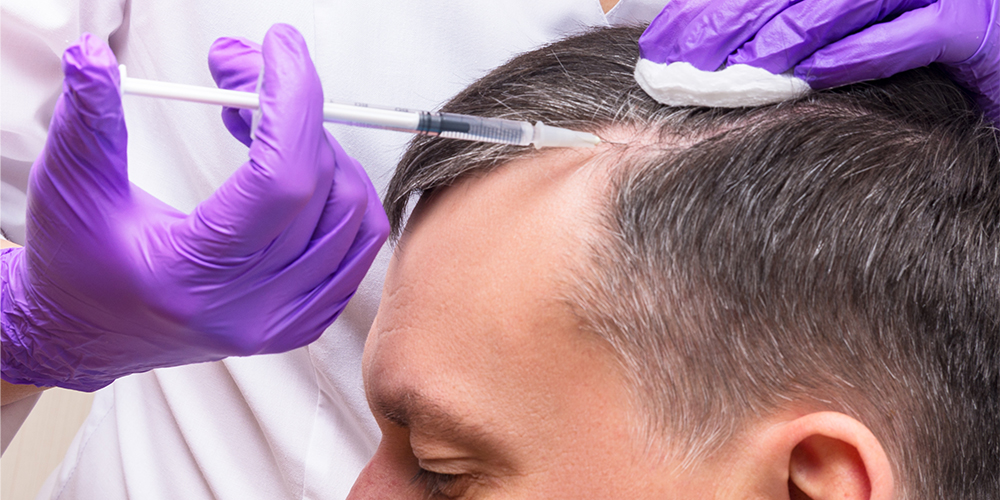
As long as there are enough hair follicles in the donor area, patients are suitable for hair transplantation, but some situations may prevent the individual from being a candidate for hair transplantation. The relevant factors of who are suitable and who are not suitable for hair transplantation are listed below:
- You must be healthy:
As with any surgery, any candidate must have a good immune system and be healthy enough to undergo the surgical procedure. In the presence of any serious disease, the risk of complications increases, both during and after the operation or surgical procedure. Such diseases should always be treated and cured prior to surgery or surgical procedure. This also applies to hair transplantation, which is a surgical procedure.
Patients with chronic or medical conditions that need to be controlled with medication should discuss this with the doctor who will do your hair transplant so that a specific hair transplant plan can be designed. Some drugs adversely affect the results of hair transplantation. Therefore, be sure to tell your doctor about all the drugs you use, especially the ones you use constantly.
- You must have completed your hair loss process:
In young patients under the age of 30, hair loss may continue after hair transplantation, as the hair loss process is not completed. In this case, young patients will either have to wait for the completion of their hair loss process or they may need to have another hair transplant in the future. That’s why patients over the age of 30 make the best candidates, as their hair loss patterns are more established. In such patients, the results of hair transplantation are more likely to look natural for a longer period of time.
- Your lifestyle plays an important role in determining your suitability for a hair transplant:
People who live healthy, exercise frequently, avoid stress and eat a balanced diet are generally better candidates for hair transplantation. In healthy living patients, the recovery period after hair transplantation is shorter and the probability of infection and swelling is lower.
- If you have a flexible scalp, your hair transplant will be easier:
The looser your scalp is, the easier it is for hair follicles taken from the donor area to implant into the bald area. Therefore, if you have such skin, you are a good candidate for hair transplantation.
- If you have alopecia, you may not be a suitable candidate for hair transplantation:
Unfortunately, men suffering from diffuse alopecia or alopecia areata are not suitable candidates for hair transplantation as the donor sources are not reliable enough. Therefore, it is unlikely that hair transplantation will be successful in such patients.
- Your adherence to the rules and instructions is another parameter that determines whether you will be a candidate for hair transplantation:
People who are committed to following all post-operative care instructions are better candidates for a hair transplant. Patients who follow directions and care for their scalp also have a lower risk of facial swelling and infection. Once recovery is complete, determined patients are more likely to be satisfied with the results of their hair transplant. However, the results will not be satisfactory in patients who are dissatisfied from the beginning and do not follow the instructions given.
Techniques of Hair Restoration Turkey
There are two hair restoration techniques that are frequently applied in the harvesting of donor hair: Follicular Unit Excision (FUE) and Follicular Unit Transplantation (FUT). The hair transplant process usually takes one day and ends within a day. There is no need for you to stay in a clinic or hospital. The bald area can sometimes be too large to be closed with a single session. Then it may be necessary to do 2 or more sessions with an interval of several months.
The stages of the FUT (Follicular Unit Transplantation or strip method) technique are as follows:
- A thin strip of skin is removed from the back of your head and divided into sections, each containing 1 to 4 hairs (hair grafts).
- Grafts are inserted into small slits made in the scalp.
- The area where the hair is harvested is closed with stitches and therefore you will have a scar on the back of your head. However, this scar will not be noticed unless your hair is very short.
- Unlike the FUE technique, not all of the hair needs to be shaved in this technique. Only the hair in the area where the scalp is excised and removed is shaved.
The stages of the FUE (Follicular Unit extraction) technique are as follows (This technique was mentioned in more detail step by step above. Please see above for more information):
- The back of the head (donor area) is completely shaved (unlike the FUT technique)
- Grafts are taken one by one (grafts)
- Harvested grafts are placed in small slits made in the bald area.
- There will be many small scars in this area of hair transplantation, but they will not be very noticeable. If a sapphire blade is used, this scar will be negligible and wound healing will be much faster.
Today, hair transplantation with the FUT technique is almost abandoned. The main reason for this is that the FUE technique has many advantages such as less invasive procedure, less postoperative pain, shorter processing time, faster recovery, possible to perform in very tight scalps and no linear surgical scars in both donor and harvested areas after transplantation.
Robotic hair transplantation is a recently developed new hair transplantation technique. Robotic circular incisions are performed on the donor area by a robot operated by means of computerised software and the extracted grafts are harvested by hand from the inside of the robotic equipment. Afterwards, they are planted in the recipient area via a computer assisted program. This new technique has some advantages (Reducing the number of required medical staff for hair transplantation) as well as disadvantages (more expensive and requiring experienced physicians for this technology). Today, due to these disadvantages coming to the fore, FUE still continues to be preferred more and more.
Hair Transplant Cost in Turkey
Turkey is one of the most preferred countries in hair transplantation due to its successful results and price advantages. Hair transplant prices in Turkey vary according to the hair transplant method to be selected.
FUE hair transplant prices in Turkey vary between 1500-2500 Euros. On the other hand, prices for FUE transplants vary between 4600-10000 GBP in the UK, 3500-3900 Euros in European countries and between 11000-16000 USD in the USA.
While DHI hair transplantation is performed at prices varying between 2500-4000 Euros in Turkey, it is performed at much higher prices such as 10000-13000 GBP in the UK, 5500-31000 Euros in European countries and 12000-14000 USD in the USA.
Sapphire FUE hair transplantation, unlike the classical FUE method, due to the feature of the blade used in opening canals or slits, wound healing is faster and provides more successful results. Due to these advantages, its prices are slightly more expensive than the classical FUE method. However, although this method is applied to 2000-5000 Euros in Turkey, it is applied to prices between 5750-14000 GBP in England, 4700-6300 in European countries and 12500-14000 USD in America.
Hair transplant advantages in Istanbul Turkey
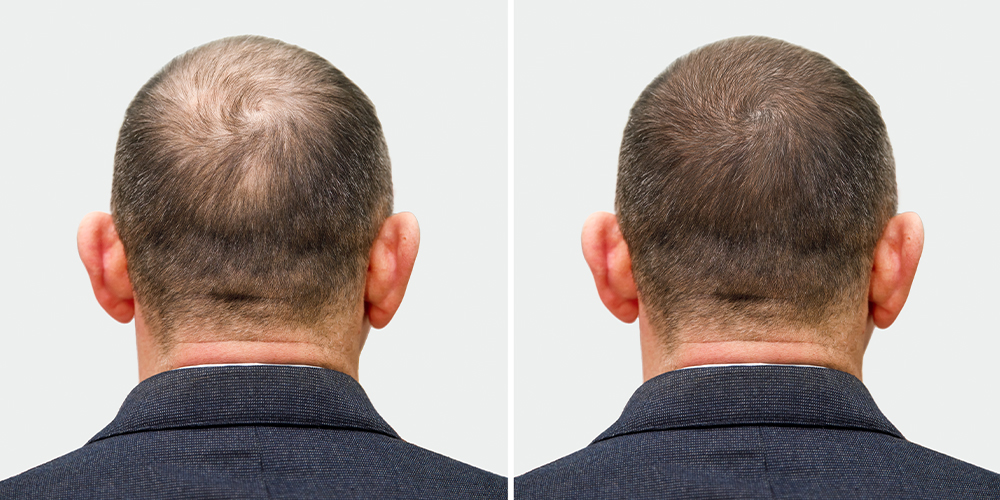
Istanbul is one of the cities with highly experienced doctors and technical staff in hair transplantation. For this reason, Istanbul has become a centre of attraction for many medical tourists for hair transplantation in recent years, thanks to its well-equipped clinics at European standards and these experienced teams. Of course, the most important factor in this is that the prices are advantageous. As we mentioned above, a health service in European standards can be obtained at a very affordable price.
Istanbul also attracts a lot of attention due to its historical places, bazaars, and entertainment centres. When all these advantageous features come together, it becomes one of the most preferred places for hair transplantation. Istanbul offers many opportunities to its visitors and medical tourists before and after the surgery. They can take a boat tour on the Bosphorus or visit the cultural heritage of Istanbul. If they wish, they can enjoy Istanbul by staying in luxurious 5-star hotels with Bosphorus views.
Another advantage of Istanbul is its advanced transportation facilities. With these means of transportation, you can go to any part of Turkey you want. It is also very easy to reach Istanbul from abroad through international airports.
Hair Transplantation inIstanbul Turkey Before&After
Thanks to the hair transplantation procedure through Meditravelist, I now have a fuller head of hair and feel much more confident about my appearance. I would highly recommend Meditravelist to anyone considering hair transplantation or any other medical treatment abroad. Thank you, Meditravelist, for helping me to regain my confidence!

